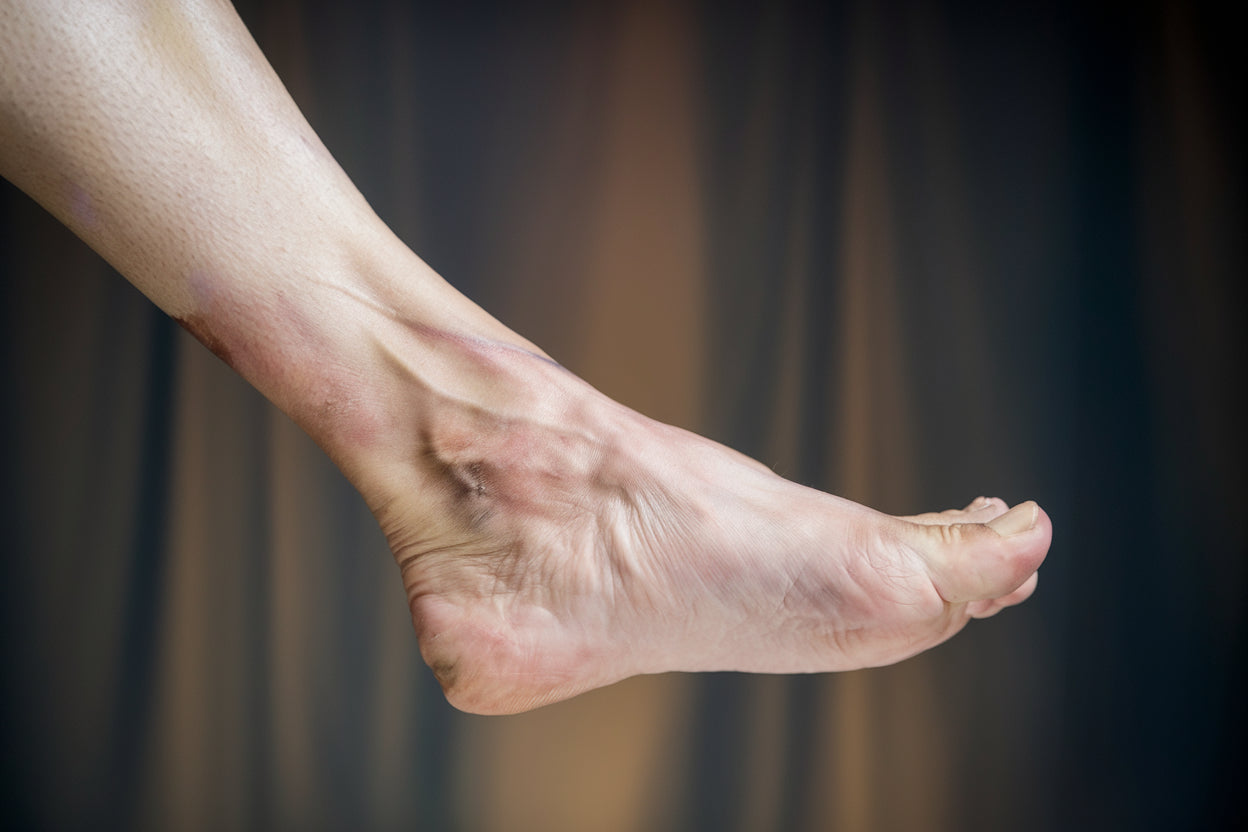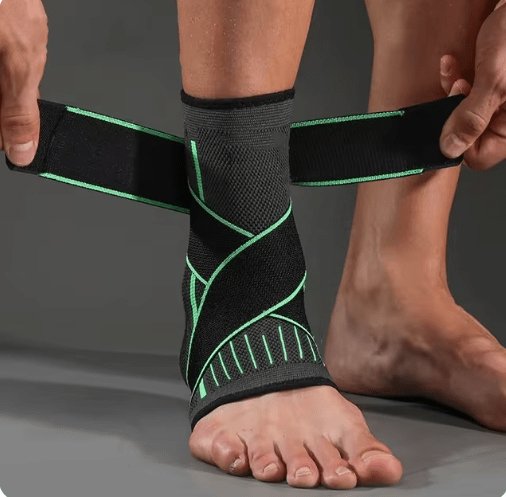Sprained Ankle: Symptoms, Treatment, and Rehabilitation

What Is a Sprained Ankle?
A sprain is an injury that occurs immediately after the foot is subjected to improper movement. Mild sprains are usually harmless, but a more severe sprain can also conceal a fracture. Most injuries of this kind heal well if the foot is taken care of properly. Acute management is important to quickly reduce swelling and facilitate the healing process.
Symptoms of a Sprained Ankle
Common symptoms include:
- Swelling around the ankle
- Pain that sometimes hurts with every step
- Bruising and tenderness around the injured part of the foot
- Instability in the ankle
- Difficulty standing on the foot
- In some cases, an underlying fracture may occur
Treatment of Sprained Ankle
The initial care is important to preserve the normal shape of the ankle and minimize subsequent injuries. A common method is RICE:
- Rest: Try to avoid putting weight on the ankle more than necessary. Refrain from heavy physical activity immediately after the injury.
- Ice: Apply cold to the area to reduce swelling. However, be careful not to press too hard.
- Compression: Use an elastic bandage to wrap the ankle. Remember to loosen it if it starts feeling too tight.
- Elevation: Raise the leg above heart level to facilitate blood circulation and reduce swelling.
This method can be sufficient for a mild sprain, but if you suspect a fracture or if the ankle is very swollen and painful when trying to stand, you should seek medical attention.

Rehabilitation and Exercises for Sprained Ankle
A structured rehab plan over 1–2 weeks (or longer if needed) is often crucial for regaining full movement in the ankle and returning to normal activities. When the pain subsides:
- Balance exercises: Stand on one leg to strengthen the muscles and ligaments around the ankle.
- Gentle training: For example, physiotherapist-guided walking exercises and calf raises.
- To prevent re-spraining your ankle, you can tape your foot or use a stabilizing ankle support from Komforten when returning to activity.
How Ankle Braces Can Help with Sprained Ankle
Ankle braces from Komforten offer several benefits for individuals with a sprained ankle:
- Provides essential support and stability to the ankle
- Aids in reducing pain and discomfort
- Lowers the risk of further injuries
- Made from high-quality materials for optimal comfort
- Customizable fit for the right amount of pressure
Conclusion
An ankle sprain is a common injury that often heals well with the right treatment and rehabilitation. By combining the RICE method, a gradual return to activity, and the use of supportive aids such as ankle braces, most individuals can effectively recover from an ankle sprain. It is important to follow a structured rehabilitation plan and not return to full activity too early to avoid recurrent injuries.
Frequently Asked Questions (FAQ)
How long does it take for a sprained ankle to heal?
Healing time varies depending on the severity of the injury, but can take from a few weeks to several months.
When should I seek medical care for a sprained ankle?
Seek medical attention if the pain is severe, if you cannot put weight on your foot at all, or if the symptoms do not improve after a few days.
Can I exercise with a sprained ankle?
Light exercise and rehabilitation exercises can often be started after the acute phase, but always consult a doctor or physiotherapist first.
How do I use the ankle brace correctly?
Place your foot in the center of the bandage, secure the lower strap around the ankle, and adjust the upper straps for optimal fit and support.
Can ankle braces prevent future sprains?
Yes, regular use of ankle braces can help prevent injuries and improve your ankle health, especially during activities with a high risk of spraining.
